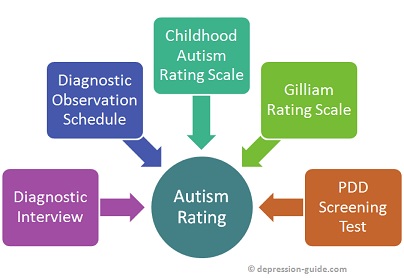The Childhood Autism Rating Scale and How it is Calculated
TweetThe Autism Research Institute has developed a process for rating a condition of autism in a child. This process is known as Form E-2. It is used to help with reviewing the severity of a condition like autism in a typical child. It is important for any parent to understand how this is going to work when trying to get a child to be treated properly without any concerns in mind.
This form will be used to help with determining how a child is going to behave. It will be used to determine results on the Childhood Autism Rating Scale.
How It Is Scored
The Form E-2 system is handled with a number of different points in mind. These include points that involve how well a child is going to behave with different types of attitudes that are common among people with autism. These include a lack of behavior in many cases, feelings of isolation and repetitive behaviors. These points are to be reviewed as a means of determining if a child is dealing with autism.
Critical Points for judgement of Autism
The points that are used in the autism rating scale will work with many points in mind. The scale will relate to how a child uses one’s body, relates to other people, adapt to change, communicate verbally and respond to prompts.
The scores on the scale will be used with scores from 1 to 4. A child who is dealing with a 1 on most parts should be developing properly or with very minimal concerns. A child with scores around 4 will have abnormal responses and be more likely to deal with autism. This will be used to determine how well a child is going to respond to different problems and concerns. This should be reviewed when handling cases that relate to autism and other similar types of disorders.

Autism Evaluation system
An evaluation or judgement of autism presence or absence will often include thorough physical and nervous system examination or evaluation. There are many screening tools which are being used to judge the severity of ASD presence. Below are some of them:
- Autism Diagnostic Interview - Revised (ADI-R)
- Autism Diagnostic Observation Schedule (ADOS)
- Childhood Autism rating Scale (CARS)
- Gilliam Autism Rating Scale
- Pervasive Developmental Disorders Screening Test - Stage 3
Evaluation of the treatment plan for Autism
There has to be a evaluation criteria for the judgement of the fitment f treatment course or plan for the parent to decide on the best suited plan for their child.
Here are some of the factor or points which can help you decide on your own about the treatment plan:
- Gives and follows a predictable uniform schedule.
- Teaches parents or guardian to manage symptoms later at home as well.
- Build the activities as per your child's interests.
- Actively engage your child's attention proving structure in thoughts as well.
- Provide regular reinforcement of behavior.
- Involve the parents and upto what level.
- Teach tasks as a series of simple steps.
- Adapted as per the child interest and likes.


Sometimes crying or laughing
are the only options left,
and laughing feels better right now.

Current Issue
 Self Help Leaflets Take the help of our self help leaflets or booklets. |
 The DG Magazine All about living with depression |
Know more on Autism
- Autism Spectrum Disorders
- Autism Symptoms and Early Signs
- Autism Rating Scale
- Helping Children with Autism
- Repetitive Behavior
- Autism
- Autism in Early Years
- Autism Friendly Environment
- Bullying and Autism
- Living with Autism
- PDD - NOS
- Myths Facts and Statistics of Autism
- A guide for adults
- Can Autism be prevented?
- Speech problem with autism
- Autism and Ageing
- Medication for autism
- Treatment
- History
- Diagnosis
- Conditions associated with autism
- Sibling
- Autism and Stress
- Facts and Statistics
- How to Choose the Right School for Your Child With ASD












